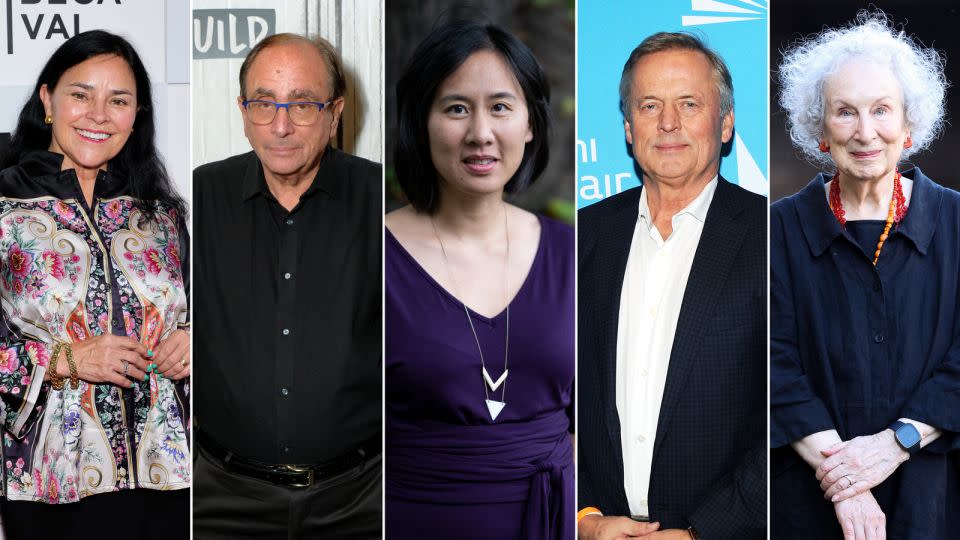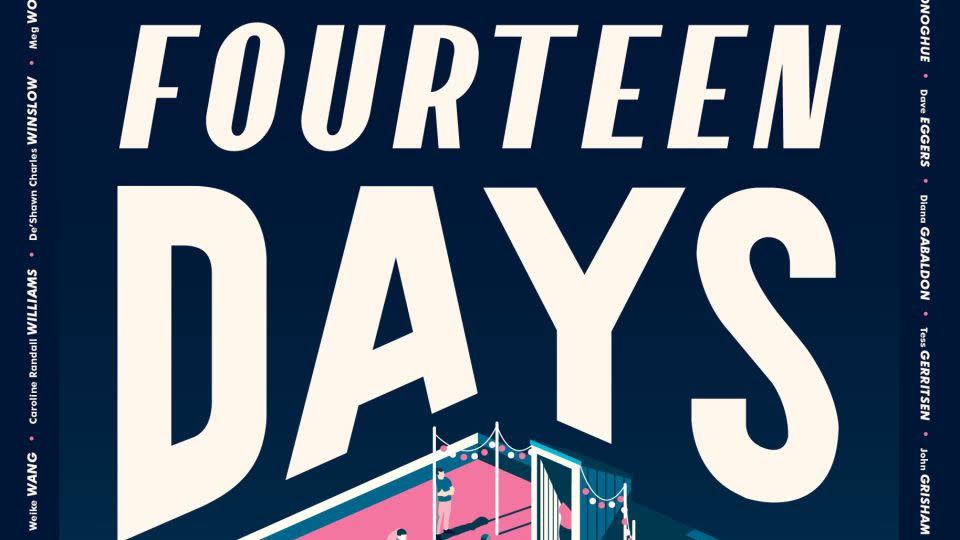36 literary giants publish a ‘collaborative’ novel — but who wrote what?
Editor’s Note: Keeping you in the know, Culture Queue is an ongoing series of recommendations for timely books to read, films to watch and podcasts and music to listen to.
(CNN) — Asked to share her rules for writing, the author Margaret Atwood once told British newspaper The Guardian: “Other people can help you a bit, but essentially you’re on your own.” But while that is certainly true for the bulk of Atwood’s — and indeed most writers’ — work, the statement stands in stark contrast to her latest project “Fourteen Days,” which is described in its introduction as a “startling and original” collaborative novel.
Collectively written by 36 American and Canadian authors whose work spans a variety of literary genres, “Fourteen Days” follows a cast of characters trapped in their New York apartment building in the early weeks of the Covid-19 pandemic, and during — as its title suggests — 14 days of lockdown.
The twist lies in that each character’s story has been penned by a different writer, and their identities are only revealed after the story ends. This unorthodox approach provides tremendous narrative momentum, leaving readers guessing which famous literary figure — including John Grisham, Celeste Ng, Diana Gabaldon, R. L. Stine and of course, Atwood herself, to name just a few — wrote what. (And with several of the writers deviating from their usual styles, even your best guess may be a wrong one.)

Douglas Preston, who co-edited the book with Atwood, came up with its concept, and was also tasked with writing the “frame” narrative, a literary technique for the telling of stories within a story. Tying the book together, then, is Preston’s character Yessie, the superintendent of the apartment building that the others call home. She learns about the residents from a notebook her predecessor left behind that is filled with his nicknames for them, as well as their personal histories and relationships.
Atwood was “instrumental” in recruiting the “wonderful and diverse group” of writers involved in bringing each of these residents to life, Preston said. (One of the authors featured, Emma Donoghue, told CNN in an email she agreed to participate in the project before she “finished reading the first paragraph” of the pitch, because she respected Atwood so much.)
Frame narratives have a storied history in literature, used in Chaucer’s “Canterbury Tales,” “One Thousand and One Nights” and “The Decameron,” Giovanni Boccaccio’s 14th-century tale of a group of young Florentine nobles who flee their plague-ravaged city and tell each other stories to pass the time.
Though some readers will draw connections between the latter work and “Fourteen Days,” Preston notes there are many differences. Perhaps most notably, “Fourteen Days” follows those left behind amid a pandemic — people without “the financial wherewithal to escape,” he told CNN. And while “The Decameron” largely follows “static types” — characters who undergo no significant development — Preston added, the fluid personalities of the hunkered-down New Yorkers prove integral to the collaborative novel.
Donoghue told CNN the writers were allowed “to come up with any stories that someone might plausibly tell on a rooftop in New York in early lockdown.” The collaboration in “Fourteen Days” emphasized “solidarity over self-promotion,” she said, adding that the project gave her a chance to step away from her “usual genre or trademark style.”
Tess Gerritsen, who normally writes romance and thriller books, contributed a piece — warning: spoiler incoming — about a nun who seemingly always knows when a patient is going to die, inspired a real-life figure from a hospital she used to work at. Because the novel is set during the pandemic, amid illness and death, Gerritsen told CNN in an email that felt like the right time “to finally share the tale.”
More broadly, the stories range from love stories to ghost stories, anecdotes grounded in realism to ones seemingly far-fetched and artfully fabricated, weaving together a portrait of their newly-formed community while illuminating a shard of each storyteller’s distinct self.

Perhaps one pitfall of such a project, however, is its presentation of the entire cast on equal grounds. Readers, as a result, may find themselves wishing for more time with some of the more interesting characters — the woman whose life has been marred by aviation tragedies, for example, or Ah Poh, whose story tells of her (successful) attempts to curse anyone who wronged her granddaughters by writing their names down and freezing them into ice cubes.
Still, the sheer range of the stories makes for an entertaining read. Both Gerritsen and Donoghue said they could not guess which of their peers had written which parts — and were shocked by a further final twist in the narrative. “It’s a rare experience to get to write a bit of a book and then experience it as an unprepared reader,” Donoghue told CNN.
At the end of the book, Yessie gazes out at the city beyond her domain, noting that there are “so many, many more stories” to hear. It cuts to the heart of how this collaborative novel is, as stated in its introduction, “a celebration of the power of stories” to provide comfort amid “our gravest challenges.”
Add to Queue: Finding friendship in fearful conditions.
Read: “The Decameron” (1353)
Comprising 100 stories in total, Boccaccio’s timeless tale of 10 Florentines taking refuge in the countryside as the Black Death rages through their city shows its characters’ capacity for resilience and joy in the face of disaster. (If the book feels too dense, there is also a 1971 film version written and directed by Pier Pasolini.)
Watch: “Contagion” (2011)
Steven Soderbergh’s pandemic drama contains a remarkable ensemble of actors: Gwyneth Paltrow, Matt Damon, Jude Law, Marion Cotillard and Kate Winslet, among others. Though its original release came nearly a decade before the emergence of Covid-19, its no-holds-barred narrative of an emerging global public health emergency (and viral misinformation thereof) has proved to be eerily evocative — and popular — rewatch in recent years.
Read: “The Year That Changed Our World” (2021)
A collaborative photobook by the photographers at Agence France-Presse explores the Covid-19 pandemic in bright, unflinching color. Featuring more than 400 photographs from more than 150 countries around the world, it’s a work organized chronologically around different themes — protests, sports, and politics among them — and serves as a visually stunning time capsule of a tragic moment in world history.

Watch: “Only Murders in the Building” (2021)
The comedy mystery TV series featuring Steve Martin, Martin Short and Selena Gomez follows another group of crime-solving New York City neighbors. The unlikely trio — an actor, a director and struggling artist — come together while investigating a string of suspicious murders in and around their affluent apartment building and offers plenty of laughs with just the right amount of narrative tension.
Read: “The Interestings” (2014)
The tenth novel from author Meg Wolitzer — who also contributed to “Fourteen Days” — follows a group of close-knit friends that meet at an arts summer camp in the 1970s from adolescence through to middle age. A sharp, witty read, “The Interestings” examines the disappointments of ordinary life (and, for some characters, fame) alongside the malleable bonds of friendship.
For more CNN news and newsletters create an account at CNN.com


